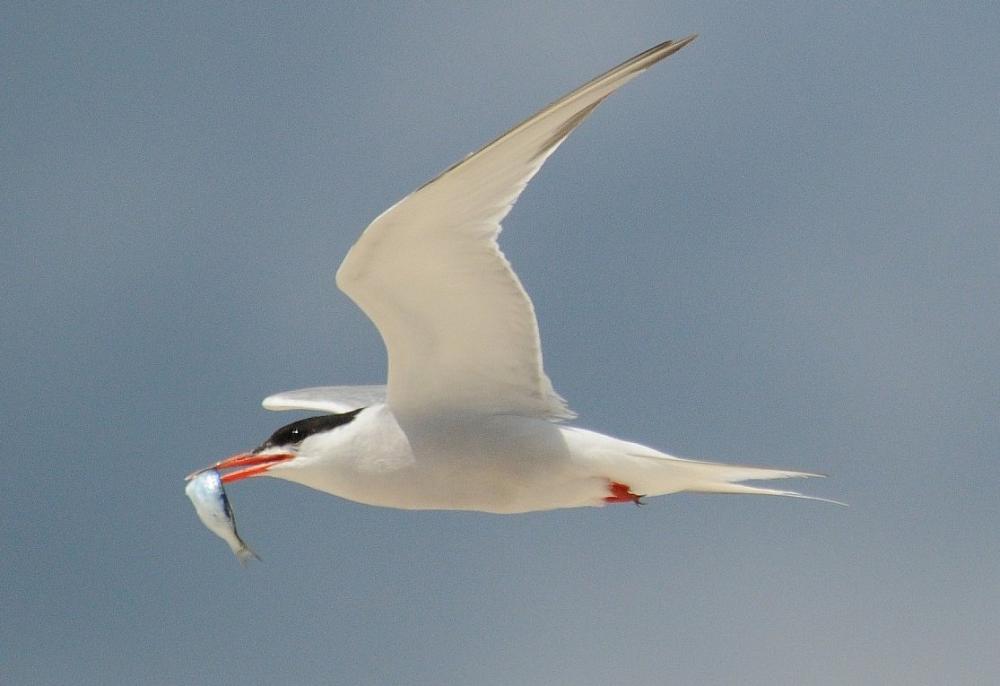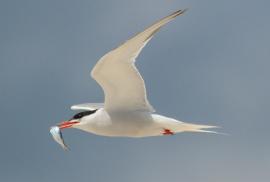Guide to Boreal Birds
Overview
A grasp of the field marks of other terns is best gained by comparison with this most common of the "sea swallows." It is a familiar sight on almost all large bodies of water where protected nesting sites exist. This bird flies gracefully over the water with deliberate wingbeats, head turned down at a right angle to the body. When it sights a fish or tadpole, it dives much like a booby to catch its aquatic prey. Sensitive to disturbance during the breeding season, whole colonies often fail to breed successfully because of disruption by humans; as a result, their numbers are slowly declining. They will attack human intruders in the nesting colonies, often striking them on the head with their bills.
Although a few birds occasionally winter along Gulf Coast of U.S., most winter along coasts of South America and some along the Pacific Coast of Central America north to Mexico. Boreal nesting populations are poorly studied and documented but known to nest on small islands in lakes and ponds and occasionally rivers. Birds arrive on boreal breeding grounds in late to mid-May and unsuccessful breeders can begin migrating south as early as July. Loss and degradation of wetlands to human activity including hydropower development and from acid rain are probably the most serious factors affecting Common Tern populations in their boreal forest breeding range.
Description
13-16" (33-41 cm). White with black cap and pale gray back and wings. Bill red with black tip; tail deeply forked. Similar to Forster's Tern, but lacks frosty wing tip. See also Arctic Tern.
Voice
Kip-kip-kip; also tee-aar.
Nesting
2 or 3 spotted olive-buff eggs laid in a depression in sand or in a shallow cup of dead grass, located on sandy or pebbly beaches or open rocky places. Nests in colonies, most often on islands or isolated peninsulas.
Habitat
Lakes, ponds, rivers, coastal beaches, and islands.
Range/Migration
Breeds in scattered colonies from Alberta and Labrador south to Montana, Great Lakes, and Caribbean. A common migrant along Pacific Coast. Winters from Florida to southern South America. Also in Eurasia.



